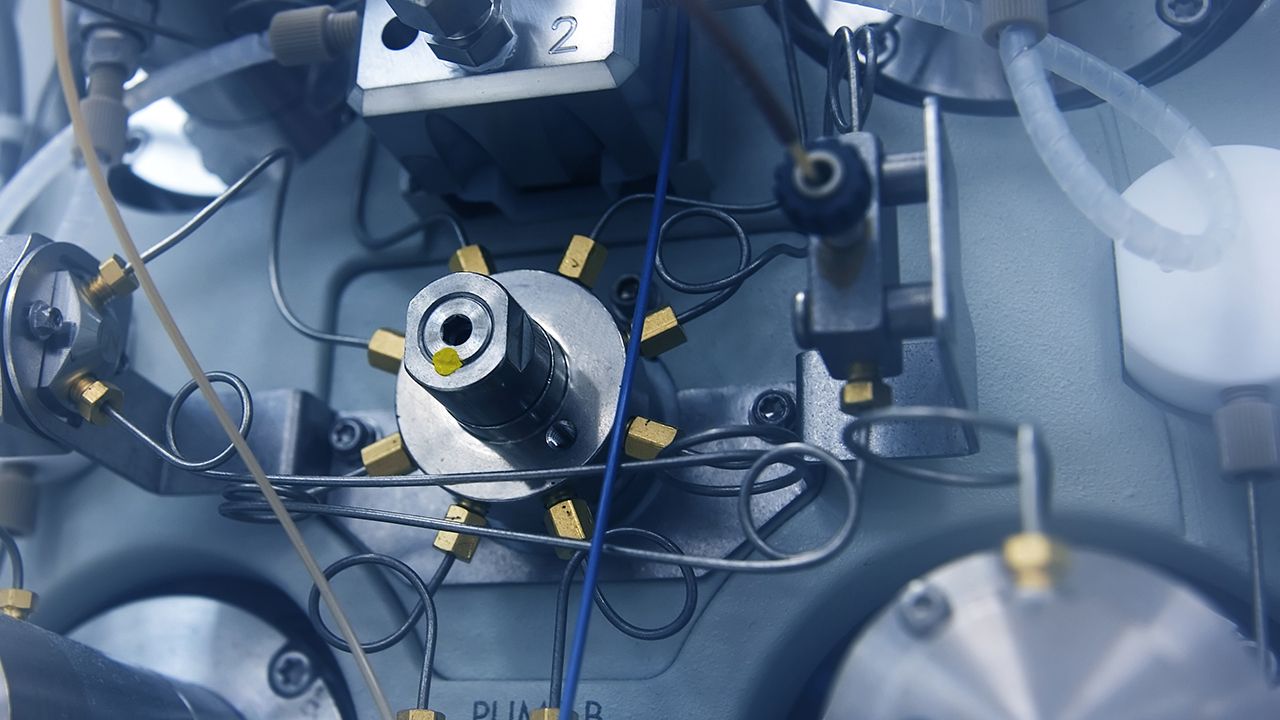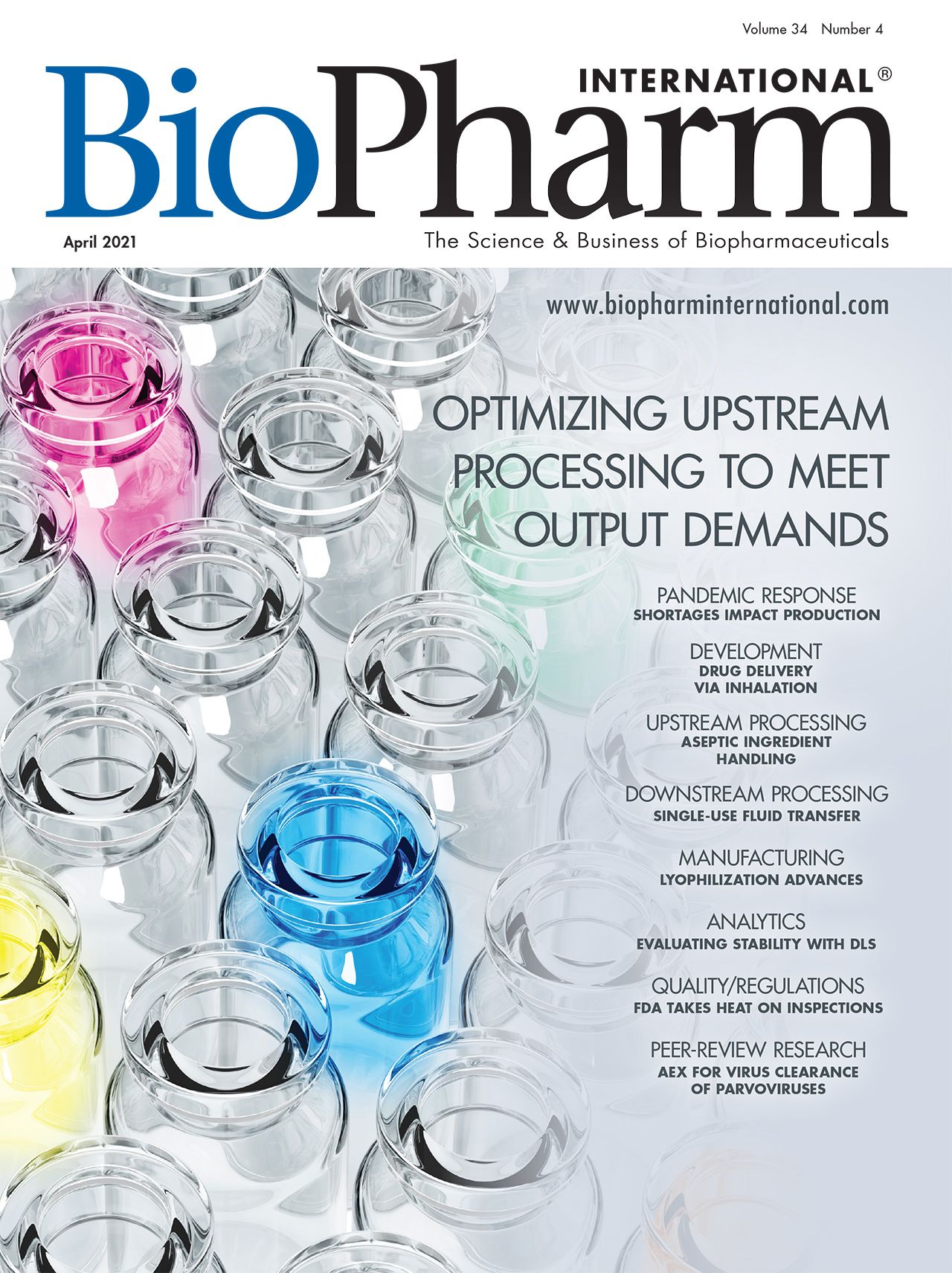Fluid Handling Systems are Seeing Benefit from Single-Use Technologies
The adoption of single-use technologies in fluid-handling systems helps streamline downstream bioprocessing operations.
Ioana Davies (Drutu)/Stock.Adobe.com

The growing use of single-use technologies in downstream bioprocessing allows for opportunities to address problematic areas in unit operations and develop systems to alleviate stresses on the biomanufacturing cycle. One area benefitting from the use of single-use systems is liquid handling and fluid transfer. Single-use components such as tubing, connectors, and valves offer more efficient workflows, for example.
To discuss the challenges and benefits of having a well-designed and properly composed fluid handling system using single-use technology, BioPharm International spoke with Tim Korwan, director, New Product Introduction—Single-Use, at Avantor.
Addressing technical challenges
BioPharm: How have single-use technologies benefitted fluid handling/fluid transfer in downstream bioprocessing? Are there any specific technical challenges that single-use technologies are better able to address and/or resolve?
Korwan (Avantor): In general, single-use equipment gives manufacturers the power to produce more of their product or units/year, and fluid transfer steps in downstream processing can benefit from the implementation of single-use systems. Single-use tubing, connectors, and valve components are among the components that can eliminate cleaning-in-place and sterilizing-in-place (CIP/SIP) procedures, removing these costly and time-consuming steps that contribute to downtime and, thereby, increasing manufacturing throughput and productivity of the facility. Time and personnel once used for CIP/SIP of stainless-steel process lines can now be reallocated to production, increasing the overall efficiency of the manufacturing process.
BioPharm: What is hose assembly and why is it important to do correctly?
Korwan (Avantor): Building hose assemblies goes beyond measuring from point A to B. Understanding the proper process flow rates to ensure that the fluid pathway meets the specification takes process knowledge and competent knowledge of fluid dynamics. In addition, the single-use system manufacturer must have deep industry knowledge of all the available fittings to be able to ensure that the proper fittings are selected for the particular application and that they integrate well with other components in the system. The selection of the material that will be in contact with the fluid pathways is important from a regulatory and quality standpoint. Finally, the production environment and any pre-use integrity testing will ensure that the hose assembly as designed will deliver the intended result.
Designing efficient hose assembly
BioPharm: In terms of design aspects, what makes for an efficient hose assembly, and how does this benefit downstream processing steps like chromatography, filtration, etc.?
Korwan (Avantor): Quality-by-design (QbD) in single-use hose assemblies is critical to ensure that the product is designed to meet the specification and application requirements for downstream processing.There has been an increasing demand to use single-use systems for downstream unit operations; two common areas where it is being applied include chromatography and filtration.
Both chromatography and filtration operations are subject to rapid fluctuations in pressure. Rapid changes in pressure can compromise the single-use hose assembly by weakening the braid reinforcement commonly used in braid-reinforced silicone hose. This weakening and eventual failure will typically happen at the point of the retainment, to the fitting, to the hose.
To overcome this challenge where high-pressure requirements were needed, it was standard practice to use non-single-use hose assemblies with stainless-steel fittings and collars, which would then be subject to the requirements of cleaning and sterilization between operations. There is a market need for a single-use high pressure hose assembly that is able to withstand the pressure fluctuations of chromatography and filtration.
Avantor, having expertise in single-use manufacturing, including areas such as hose fitting and retainment design, recognized this common failure point and designed a new high-pressure fitting (SterilEnz). The new fitting uses a multi-barb design and, when used in conjunction with the proper retainment system, offers a large surface area, multi-point attachment to address high-pressure fluctuations common in downstream applications. Proper fitting and retainment design ensures that the connection between fitting and hose can withstand pressure fluctuations and the integrity of the system.
BioPharm: Can you describe the general schematic of a single-use-technology-based hose assembly; does this include components such as valves, connectors, clamps, etc.?
Korwan (Avantor): In general, the operation has two points, one inlet and one outlet, unless this is a manifold assembly, in which case there could be multiples of those inlets. These fluid pathways can be controlled using external valves and use connectors to change fluid direction. Many times, these pathways can be included in process instrumentation to measure process parameters, such as pressure and temperature.
BioPharm: What impact do downstream single-use systems have on titer/yield?
Korwan (Avantor): Any fluid pathway, when designed poorly, can develop hold-up volume that can negatively affect the titer or yield in a downstream process. Good engineering practices and knowledge of single-use systems will ensure proper design of these fluid pathways, preventing line losses and improving the yields in downstream processing.
Another area of focus that can have an impact on titer/yield in downstream is buffer preparation. Buffers play a significant role in biopharmaceutical manufacturing, typically representing the major component by volume used in biopharma downstream processing steps to help control pH levels and stabilize reactions during purification.
Traditional buffer preparation in monoclonal antibody (mAb) manufacturing requires large bioreactor tanks to mix the buffers from raw materials, such as salts (e.g., sodium chloride) in concentrated form that are then diluted with water-for-injection (WFI). Buffer preparation tanks not only require a large footprint but are also a significant capital investment. Every buffer produced must also be tested rigorously, requiring time and effort from a manufacturer’s valuable quality control and assurance resources. Each buffer must then be stored in a dedicated space or container, where the quality of the buffer has to be maintained until it is used, further adding to the facility space requirements.
An alternative solution is for a manufacturer to obtain ready-to-use buffers at 1x concentrations, which can also be packaged in single-use bags. Equipment options, such as in-line dilution systems, can help further improve a facility’s buffer management practices by offering the ability to prepare buffers on-demand. This allows a manufacturer to directly use the buffers in the process, eliminating the time it would normally take to prepare, mix, and store buffers in large tanks in its facility.
About the author
Feliza Mirasol is the science editor for BioPharm International.
Article Details
BioPharm International
Vol. 34, No. 4
April 2021
Pages: 24–25
Citation
When referring to this article, please cite it as F. Mirasol, “Fluid Handling Systems are Seeing Benefit from Single-Use Technologies,” BioPharm International 34 (4) 2021.

Thermo Fisher Opens Advanced Therapies Collaboration Center in California
April 18th 2025The 6000-square-foot facility will provide cell therapy developers the support they need to transition to CGMP manufacturing, and an expanded footprint of the new center is expected to open in Philadelphia later in 2025.